The South Korean artist painting a Yorkshire chapel with prismatic light
We’ve taken a shine to Kimsooja’s ethereal installation at Yorkshire Sculpture Park
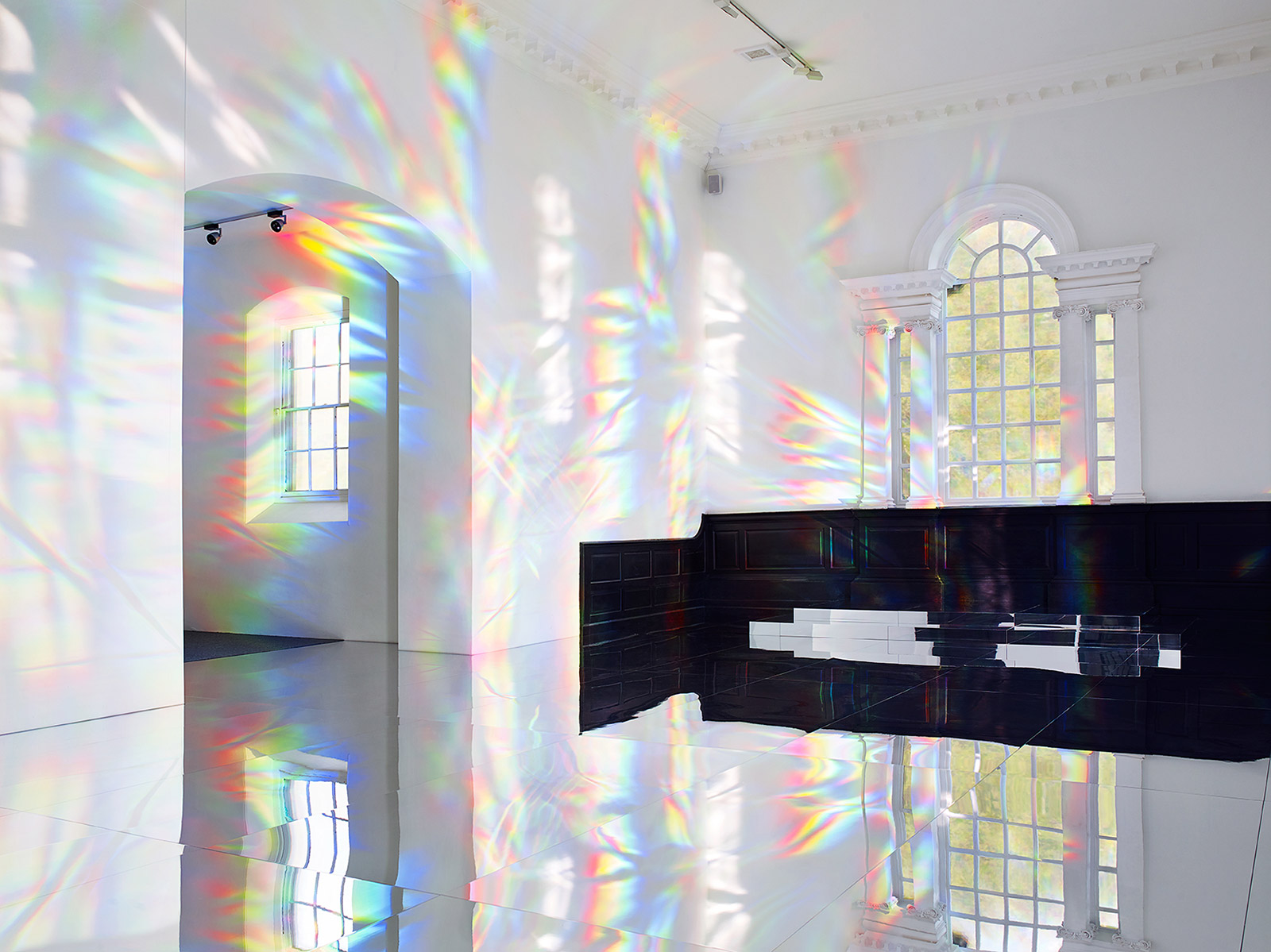
Five hundred acres of voluptuous hillsides are peppered with wandering eyes, concrete lumps and hollowed Hepworths, all cohabiting the landscape with grazing sheep. Yorkshire Sculpture Park is perhaps one of the only sites in the UK where you might confuse an ovine watering trough with a modernist sculpture. Now it also houses the only chapel where you might experience an actual divine intervention at the hands of South Korean artist Kimsooja.
The park’s 18th-century deconsecrated chapel has been blessed with a lineage of creative consecrations by the likes of Bill Viola, Chiharu Shiota and Ai Weiwei, whose Iron Tree still sprouts its rust-ridden limbs outside the entrance. Now it’s Kimsooja’s turn and she’s delving into mirrors, prisms and the inexhaustible variety of light.
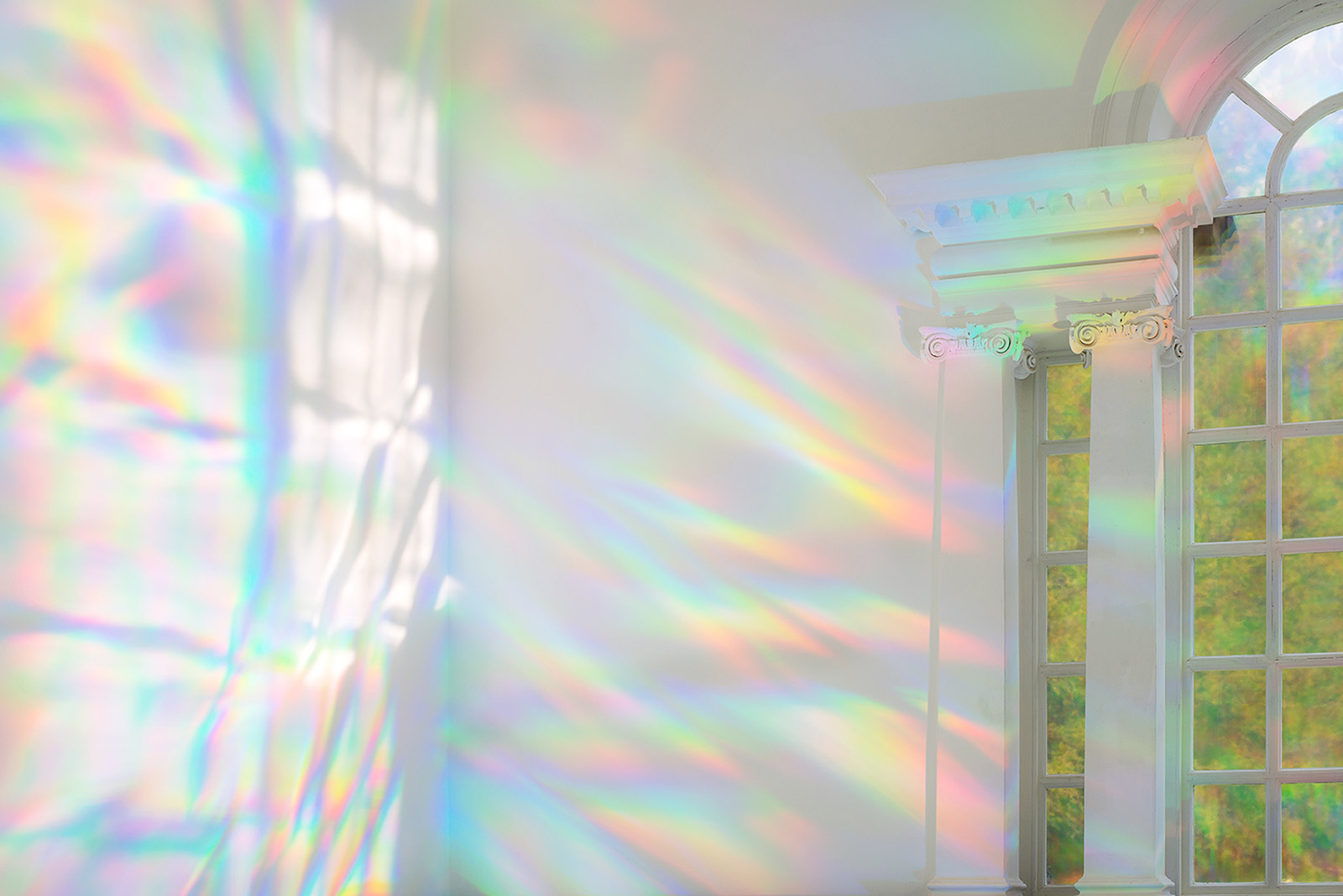
During the last 25 years of her career, the artist’s go-to metaphor has become the South Korean bottari: a bundle of fabric used to transport possessions from place to place, an object that symbolises both home comforts and the geographical dislocation of migrants. In her installation To Breathe, the chapel has been wrapped like an architectural bottari.
Each window is encased in a translucent film etched with thousands of micro scratches – a method known as ‘diffraction grating’. The effect is a fluctuating prismatic haze, which is nothing short of entrancing. Shards of intangible, psychedelic light shoot under and around your body; when one crosses your line of sight directly, it pierces your retina like a white-hot needle. Kimsooja takes you for a dizzying ride on her colour wheel, which leaves you wondering when the acid will wear off. For the artist, viewers ‘play an operative role in the work’s existence, disrupting the normative “passive consumer” role of an audience’.
The gaze of the audience is a needle, “sewing” the piece as their gaze weaves in and out
The chapel’s architecture has been exploited as much as respected. The historical framework is intact, but it’s been stripped of Christianity and spun into a vessel of anonymous faith. The walls are are awash in white, the altar has been reduced to a step, and in lieu of any organ for the loft, Kimsooja has composed her own recorded soundscape to ‘activate the aural space’.
She hums, moans and breathes on loop in a ritualistic, lamenting chant of varying pace and force. At this point, things start to feel more asthmatic than aesthetic, like the aftermath of a sprint up the hill to the chapel. The huffs and puffs of respiratory desperation climax before dropping off like a sneeze that never materialises. The audio begins to take a back seat, and you start to appreciate the rhythm of it all – a warming, womblike cocoon to accompany a truly exceptional view.
RELATED STORY

The expansive mirrored floor looks like slick oil, cloning the chapel interior and doubling your sense of disorientation. You gaze down into a plunging portal to limbo; reflected back at you is possibly the most unflattering upward angle of your body you will ever see. But coupled with the intimate, breathy soundtrack that feels as though the artist is present at all times, this paints a picture of self-consciousness rather than self-absorption, more Big Brother than Narcissus. ‘The gaze of the audience is a needle, “sewing” the piece as their gaze weaves in and out,’ Kimsooja reflects.
Down the hill, another sculpture takes the concept of the needle straight to the point. Kimsooja’s 14m high A Needle Woman: Galaxy was a Memory, Earth is a Souvenir (2014) has a razor-sharp spire that stabs at the heavens like a radio transmitter or teleportation prop from Doctor Who. The grid like exoskeleton – made with a laminated polymer film developed with nanoscientists at Cornell University – ‘glows when the light hits it, like the wings of a butterfly or the shell of a beetle’, as exhibition curator Sarah Coulson puts it. On entry to this micro-chapel, another mirrored floor doubles the size of the interior like a Tardis and for a moment, you lose all notions of time and space.
YSP provides fertile ground for experimentation with light, and Kimsooja has capitalised on everything the daylight has to offer, even beyond the chapel walls. This isn’t the first time the artist has shrouded and augmented a building to the point of unrecognisability. Included on her ‘wrap’ sheet so far are the Palacio de Cristal, Madrid; the Centre Pompidou-Metz; and the Korean Pavilion at the 55th Venice Biennale. But the concept is ageing well and the intervention at the 18th-century chapel doesn't feel like another regurgitation of the theme, but instead, a necessary sequence.

INFORMATION
‘Kimsooja: To Breathe’ is on view until 29 September. For more information, visit the Yorkshire Sculpture Park website
ADDRESS
Yorkshire Sculpture Park
West Bretton
Wakefield WF4 4LG
Receive our daily digest of inspiration, escapism and design stories from around the world direct to your inbox.
Harriet Lloyd-Smith was the Arts Editor of Wallpaper*, responsible for the art pages across digital and print, including profiles, exhibition reviews, and contemporary art collaborations. She started at Wallpaper* in 2017 and has written for leading contemporary art publications, auction houses and arts charities, and lectured on review writing and art journalism. When she’s not writing about art, she’s making her own.
-
 At last: a London hotel that’s great for groups and extended stays
At last: a London hotel that’s great for groups and extended staysThe July London Victoria, a new aparthotel concept just steps away from one of the city's busiest rail stations, is perfect for weekends and long-term visits alike
-
 Three new smartwatches showcase new frontiers in affordable timepiece design
Three new smartwatches showcase new frontiers in affordable timepiece designLong may you run: smartwatches from Withit, Kospet and OnePlus favour function and value above all else, demonstrating just how much the smartwatch has evolved in recent years
-
 Debuts, dandies, Demi Moore: 25 fashion moments that defined 2025 in style
Debuts, dandies, Demi Moore: 25 fashion moments that defined 2025 in style2025 was a watershed year in fashion. As selected by the Wallpaper* style team, here are the 25 moments that defined the zeitgeist
-
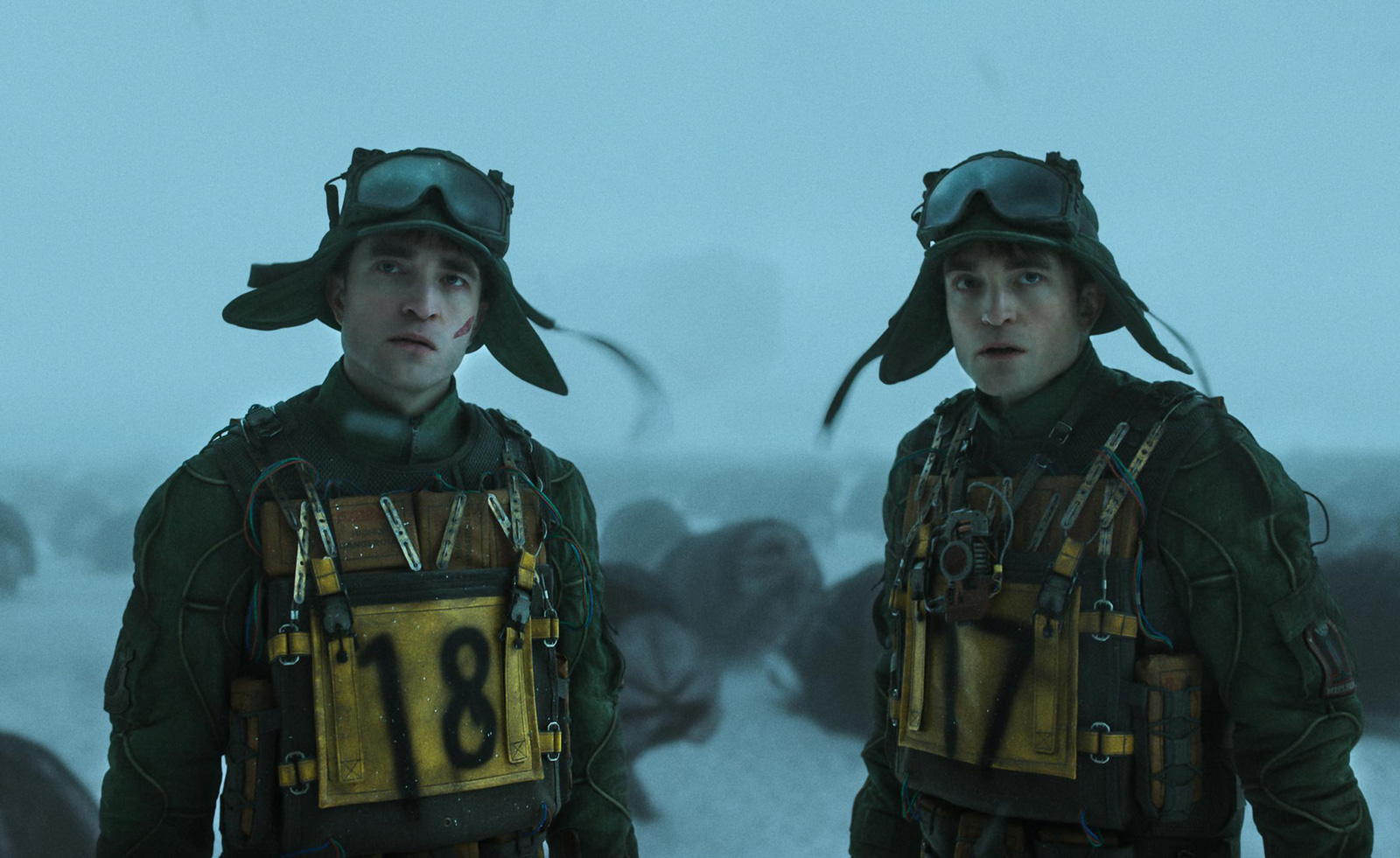 Bong on Bong: the Mickey 17 and Parasite director looks back on his career
Bong on Bong: the Mickey 17 and Parasite director looks back on his careerAs sci-fi romp Mickey 17 prepares to hit the big screen, Oscar-winning director Bong Joon Ho reflects on his career so far
-
 Photographing free time in South Korea: rare days off captured in new book
Photographing free time in South Korea: rare days off captured in new bookFree time is hard-earned in South Korea. In Seunggu Kim's new photography book 'Better Days,' he captures the beauty of the country at play
-
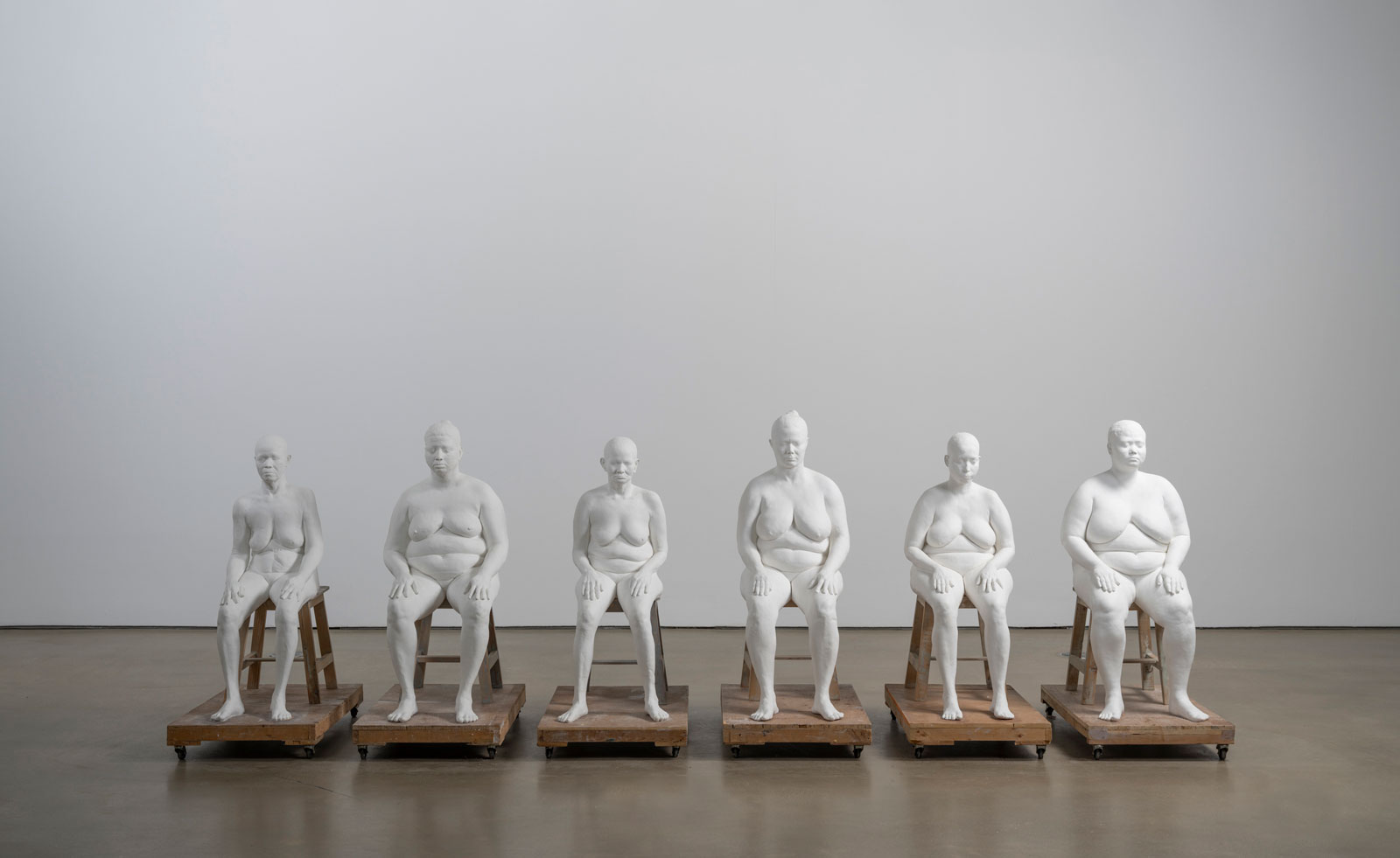 ‘Regeneration and repair is a really important part of how I work’: Bharti Kher at Yorkshire Sculpture Park
‘Regeneration and repair is a really important part of how I work’: Bharti Kher at Yorkshire Sculpture ParkBharti Kher unveils the largest UK museum exhibition of her career at Yorkshire Sculpture Park
-
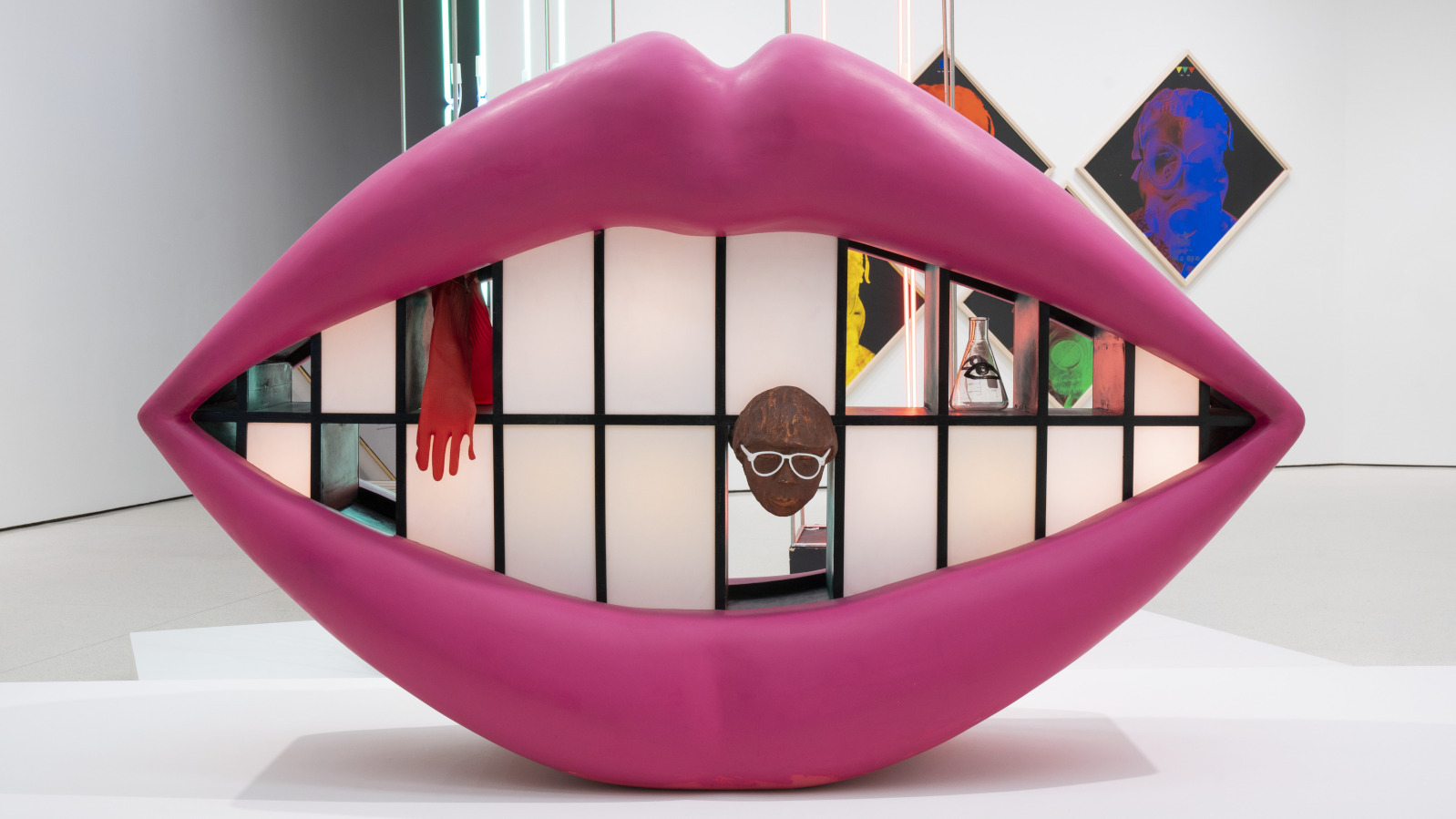 An avant-garde Korean art movement resurfaces in LA
An avant-garde Korean art movement resurfaces in LALA's Hammer Museum gets its teeth into avant-garde Korean art with ‘Only the Young: Experimental Art in Korea, 1960s–1970s’
-
 Jonathan Baldock’s playful works bring joy to Yorkshire Sculpture Park
Jonathan Baldock’s playful works bring joy to Yorkshire Sculpture ParkJonathan Baldock mischievously considers history and myths in ‘Touch Wood’ at Yorkshire Sculpture Park
-
 Edinburgh Art Festival 2023: from bog dancing to binge drinking
Edinburgh Art Festival 2023: from bog dancing to binge drinkingWhat to see at Edinburgh Art Festival 2023, championing women and queer artists, whether exploring Scottish bogland on film or casting hedonism in ceramic
-
 Last chance to see: Devon Turnbull’s ‘HiFi Listening Room Dream No. 1’ at Lisson Gallery, London
Last chance to see: Devon Turnbull’s ‘HiFi Listening Room Dream No. 1’ at Lisson Gallery, LondonDevon Turnbull/OJAS’ handmade sound system matches minimalist aesthetics with a profound audiophonic experience – he tells us more
-
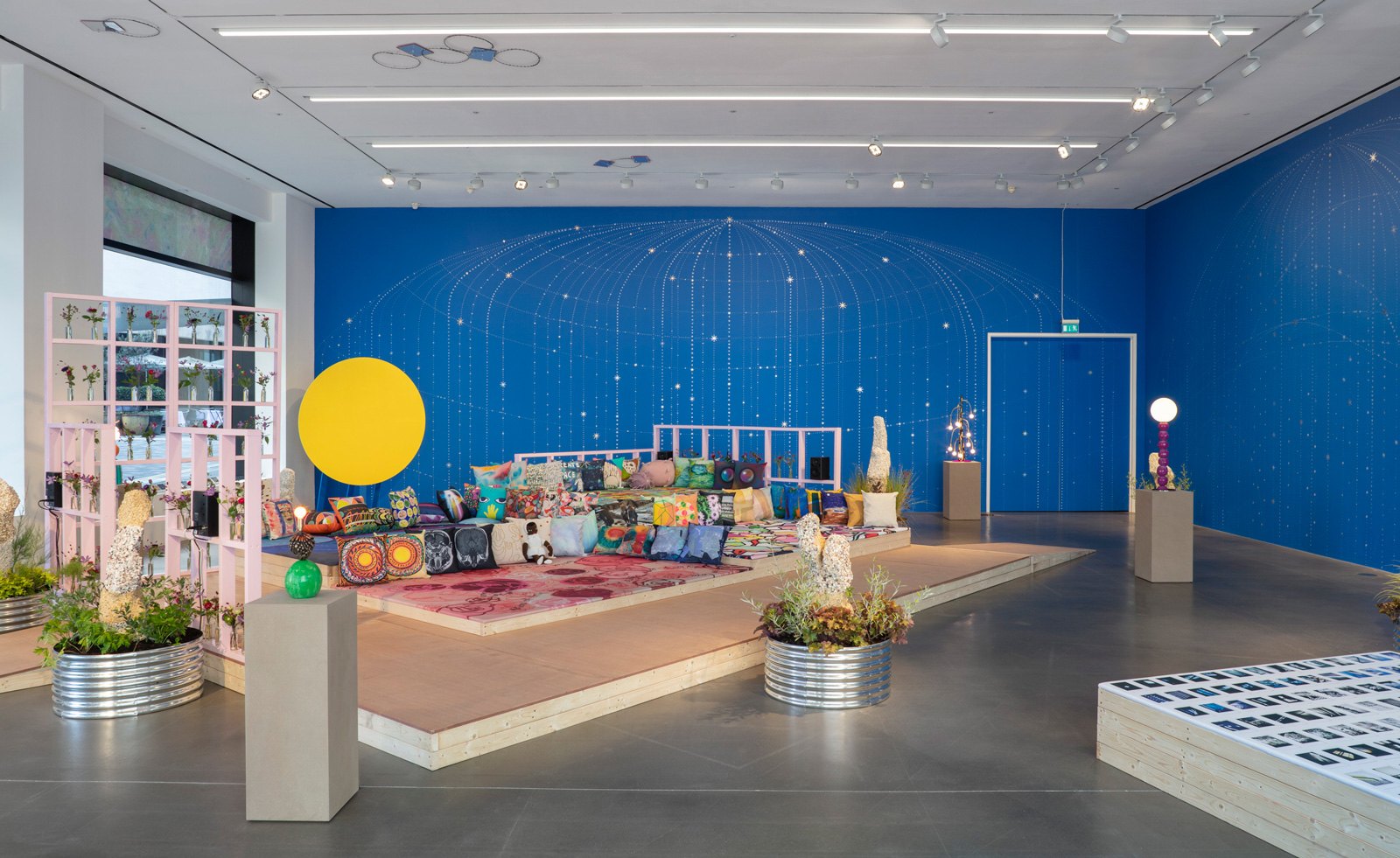 Hospital Rooms and Hauser & Wirth unite for a sensorial London exhibition and auction
Hospital Rooms and Hauser & Wirth unite for a sensorial London exhibition and auctionHospital Rooms and Hauser & Wirth are working together to raise money for arts and mental health charities